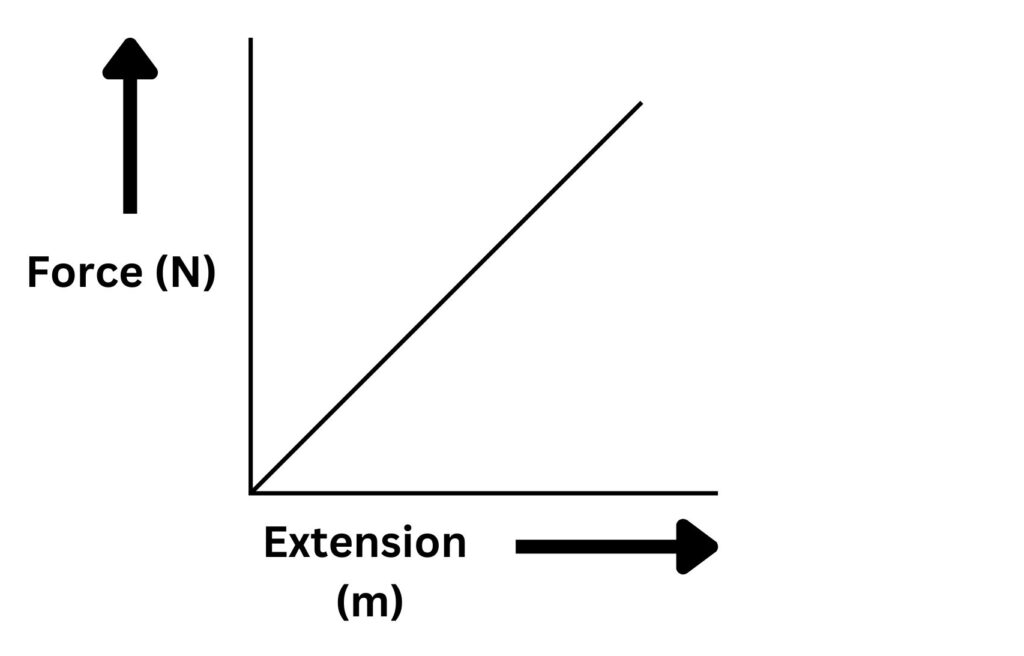AQA GCSE Hooke's Law(Physics)
Hooke’s Law
Hooke’s Law states:
The extension of an elastic object, is directly proportional to the force applied, provided that the limit of proportionality is not exceeded.
Examples of elastic objects: Metal springs, elastic bands (when stretched by a small amount), foam mattresses.
Lets break down the definition into parts:
Extension, this is the increase in length.

The original length of the spring is 1.4 cm.
After the 1st weight is added to the spring, the length increases to 2.1 cm.
Extension (after 1st weight added) = 2.1 cm- 1.4cm = 0.7cm
Directly proportional

As the force applied increases, so does the extension, as shown by the graph above.
Limit of Proportionality
The limit of proportionality is the point up to which the applied force is directly proportional to extension so Hooke’s law applies.
So, after the limit of proportionality, the force and extension are not directly proportional and the graph line will become curved as shown below.

Practice Questions
1.Define Hooke’s law
2.Does Hooke’s law apply to both compression and stretching for an elastic material?
3. State what is meant by the term limit of proportionality
Absorption and Emission of EM Radiation
JJ Thomson and Plum pudding model
Ernest Rutherford and the Nuclear Model
Niels Bohr changing the Nuclear Model
Discovering the Proton and Neutron
Measuring radiation from radioactivity
Radiation types and properties
Random nature of radioactive decay
Radioactive contamination or irradiation
Hazards of contamination and irradiation
Studies on the effects of radiation on humans
Different half lives of radioactive isotopes
Nuclear Fission Chain Reaction
Writing nuclear fission equations
Drawing ray diagrams for a concave lens
Drawing Ray Diagram to produce a virtual image for a convex lens
Drawing ray diagram to produce a real image for a convex lens.
Specular and Diffuse Reflection
Seeing Coloured Objects Part 2
Viewing objects through coloured filters
Transparent, Translucent and Opaque